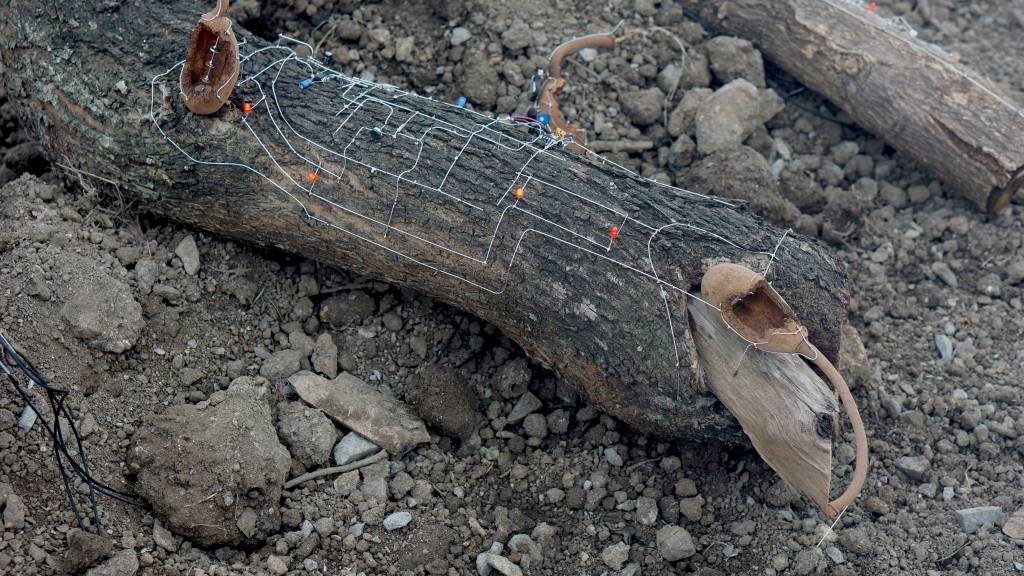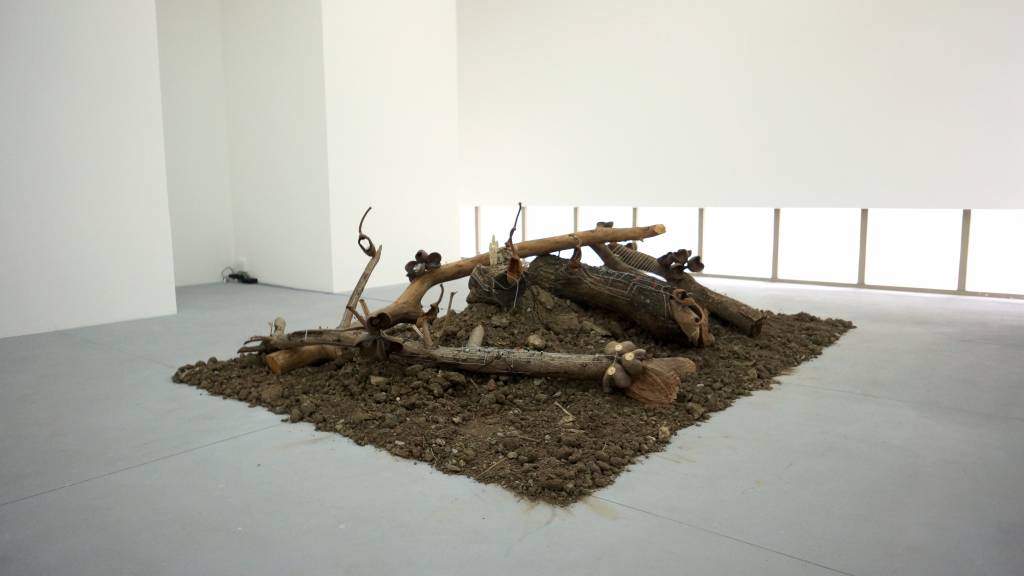
GL: Most people know you as a sound artist and while your practice revolves around sound as a medium, the physical presentation of your work is equally important. This is especially so for your sound installations, which I find extremely sculptural in the way you often make visible and formal the sonic apparatus. You told me that you were initially trained as a sculptor? How did you move from that to working with sound?
ZM: Yes, most people know me as a sound artist but they forget that I come from a sculptural background. I was trained as a sculptor at LaSalle College of the Arts. Actually, I did not not move from sculpture to sound. It was more like expanding my practice. I was introduced to sound in 2001 during my artist in residence in Ona, Norway. This Dutch artist, Jurr Van Diggele introduced me to computer music which he was using to make electronic-trance dance music. Back then in 2001, computer music was kind of alien. It was something new. I was fascinated by it. So when I came back, I explored further this medium of sound composition – field recordings, sensors, automation and electronics. For me the possibilities were endless. There were a lot of discoveries then, and even now.

Detail of Of Nature and Technology (2019), driftwood, metal wires, LEDs, light sensors, electronic components, and relay timer, dimensions variable. Photo courtesy of STPI.
In 2004, I decided to scrap all the visual elements in my work and to just focus on sound and spaces. Physical spaces were very interesting to me in terms of their characteristics and properties. It is a dialogue between sound and spaces. It was only in the last 5-6 years that I started to introduce sculptural elements back into my work. I am interested in exploring the physical sounds created by these objects/sculptures.
GL: Do you think having a background in sculpture made you approach sound in a different way? In terms of your installation work, what comes first, the sound or the visual component?
ZM: Yes, definitely. If I am musically trained, my approach to sound would be different. My approach to sound is very similar to that of sculpture. I still use the basic principles of sculpture for addition, subtraction, layers and textures when I am creating my sound works. Materials are very important in my work. In terms of my installation work, ideas come first, followed by small drawings, then research and development. It all depends on the projects – sometimes sound comes first followed by visuals, and sometimes it’s the other way around.
GL: Looking at your body of work, there are a variety of sonic textures employed in different settings. More recently, you have made works in rather unusual environments – I am thinking of Are We Listening? (2017) in the Skovsnogen Deep Forest Artland, Denmark and Why Listen (2019) in the Dominican Monastery Ptuj, Slovenia. Both these places struck me as rather quiet and contemplative. Is that why you reference the act of listening here? How does the site influence the way you think about the pieces?
ZM: Yes, they were rather quiet and contemplative. Actually, for these two spaces, I wasn’t referencing ‘listening’ on purpose since most of my works are about listening. I feel that living in the city, most of us neglect our senses of listening. We ‘hear’ and not ‘listen’. I find beauty in the daily sounds of the city. It has its own characteristics and rhythm. I guess maybe these two spaces were kind of quiet and it heightened my senses of listening and made it more contemplative.
GL: I was thinking about Pauline Oliveros’s notion of ‘deep listening’ with these works. There’s something quite spiritual about creating a space for opening up our bodily senses to the presentness of sounds, and turning it into a daily practice. Are there any activities or rituals that you do as a part of your making and thinking process?
ZM: Personally for me, I must have my coffee and cigarettes in the morning before I start my day. It is the time where I gather my thoughts and ideas before I proceed in making my work. This is my daily ritual and it helps centre and compose me throughout the day.
GL: Let’s talk about the work in the exhibition Of Nature And Technology (2019). Usually, your work consists of everyday objects and the use of largely industrial materials. What made you turn to working with natural elements in this instance? And how is the version of the work in the STPI Galley different from when it was first shown in Sanamchandra Art Gallery at Silpakorn University in Thailand?

Installation view of Of Nature and Technology. Photo courtesy of STPI.
ZM: Technically speaking, you could consider the driftwood I used everyday objects that we see in our surroundings daily. Maybe we refuse to accept that driftwood is a part of us because it does not serve a purpose in our lives. Before I went to Thailand, I was experimenting a bit with driftwood because I liked its forms and shapes. When I was in Thailand, I saw a lot of this driftwood lying around the university, some of which I had never seen before, e.g. this dried fruit in the shape of a heart. I thought it was beautiful. Maybe the version of the work in the STPI Gallery is bigger and its form slightly different. In terms of sound, I foresee this aspect being slightly different because of the characteristics of the space and lighting.
Click here to return to Strange Forms of Life: Resource Centre